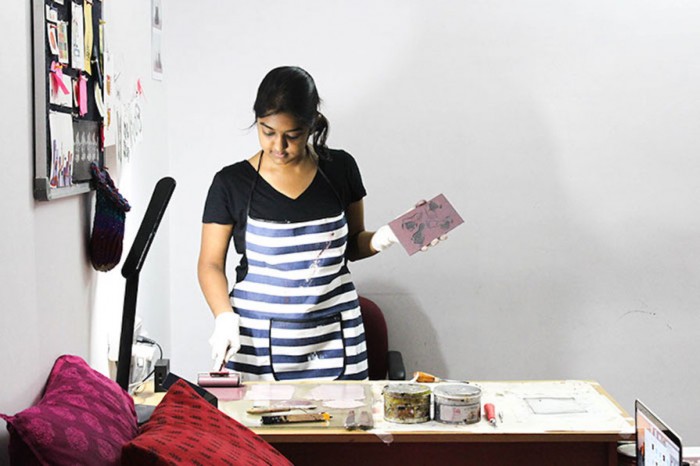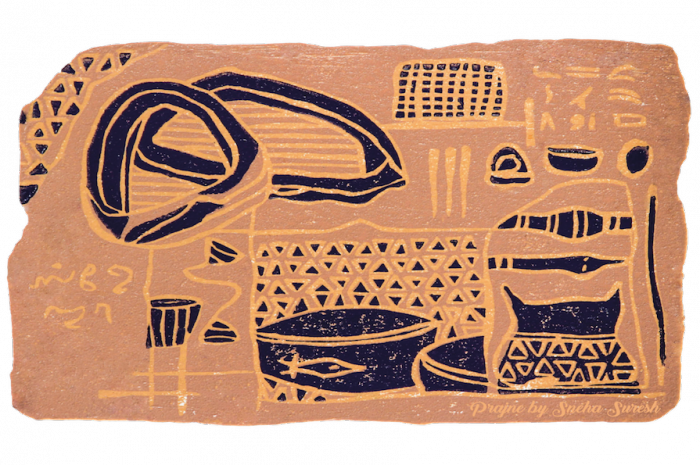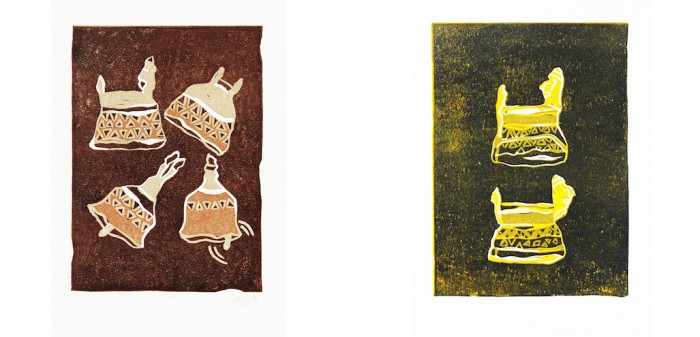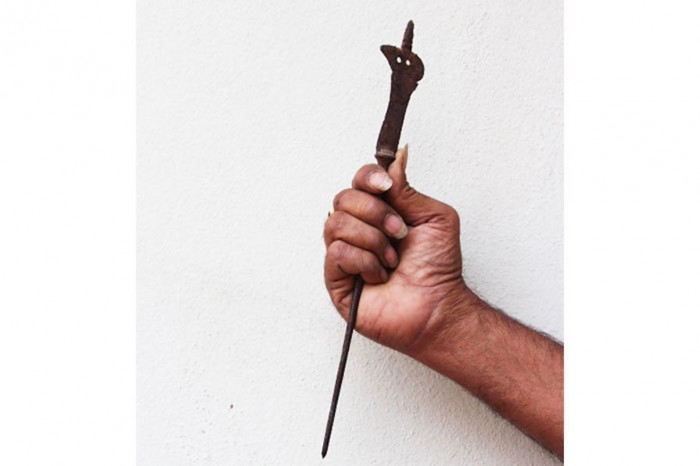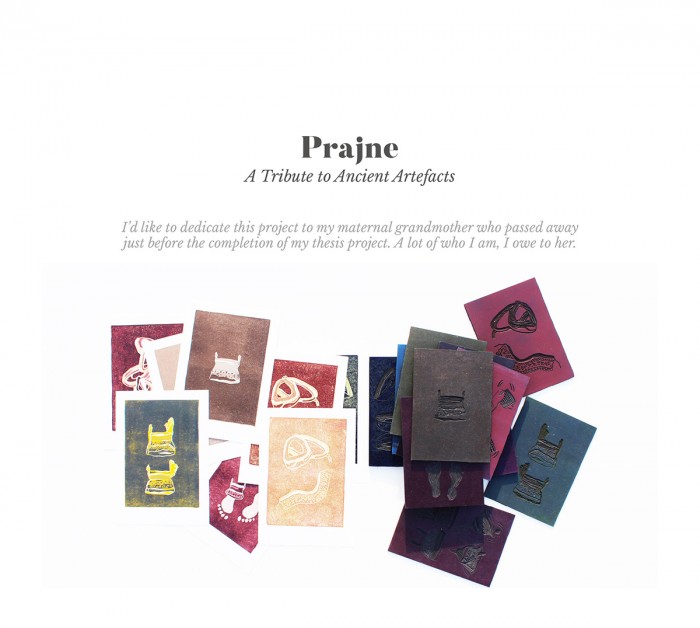Sneha Suresh, 22, has always been interested in the way that visual communication can push people to look at things in a different way.
Suresh, who grew up in Goa in India, says her interest in ancient artefacts began when she visited a small town called Gulbarg where she met a renowned artist and artefact collector called Vijay Hagargundgi.
The artist is best known for reviving the art of Surpur paintings.
She says that most of Hagargundgi’s collections were artefacts from Northern Karnataka, some dating back to the 6th century BCE.
She returned from Gulbarga with information including mind-maps, recordings, images, notes and insights. She then used all the information to come up with her thesis project called Prajne, which means consciousness in Kannada.
“The narratives associated with these artefacts are frozen in time and deserve to be preserved as much as the object and the notion of the hand-made itself. If these artefacts are placed at a museum there are chances of people just walking past them without appreciating them for all that they are. The purpose of my project is to give these artefacts and their narratives a new life through visuals while preserving and celebrating the old.”
In the project each artefact photograph is followed by a series of animated illustrations that visually communicate the utility of the corresponding artefact.
“During one of my visits, Mr.Vijay showed me this one metal tool called the ‘ookunikantha’ that was used to write on palm leaves. The ookunikantha had two holes on the top that had trinkets hanging from it. When an author in the past wanted multiple copies of his work, he would dictate it to a batch of students who would write whatever he was saying on palm leaves, as is. While the students wrote what the author dictated, the trinkets would hit against the tool and make a sound. If the sound that the author heard while all the students wrote what he dictated was not in sync, the author would know that someone has made a mistake.”
She says that her series of lino printed illustrations are meant to give the narratives associated with certain ancient artefacts, like the ooknikantha for example, a tangible form.
She is one of several design graduates exhibiting at the first antenna exhibition in Eindhoven this month. Curated by Design Indaba and hosted by Dutch Design Week, antenna gathers some of the world’s most cutting-edge graduates in one place, Eindhoven, on 22 October. Following the success of the inaugural conference last year, we’ve decided to take it a step further.
While 20 student designers take to the stage to unpack their future-proofing ideas, an exhibition will be held in tandem at the Veemgebouw, Strijp S Eindhoven during Dutch Design Week between 20 and 28 October 2018.
Meet the speakers and exhibitors:
The young innovators at antenna’s first exhibition

